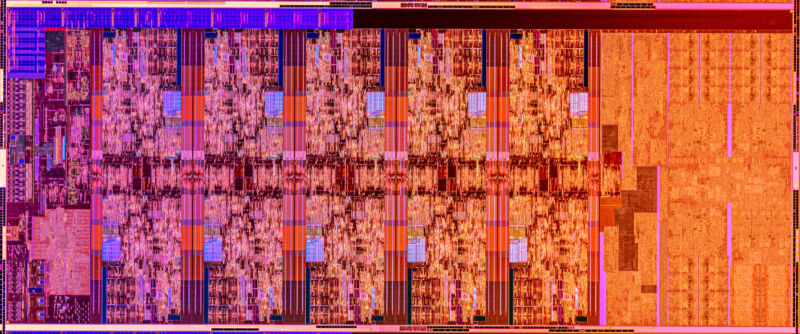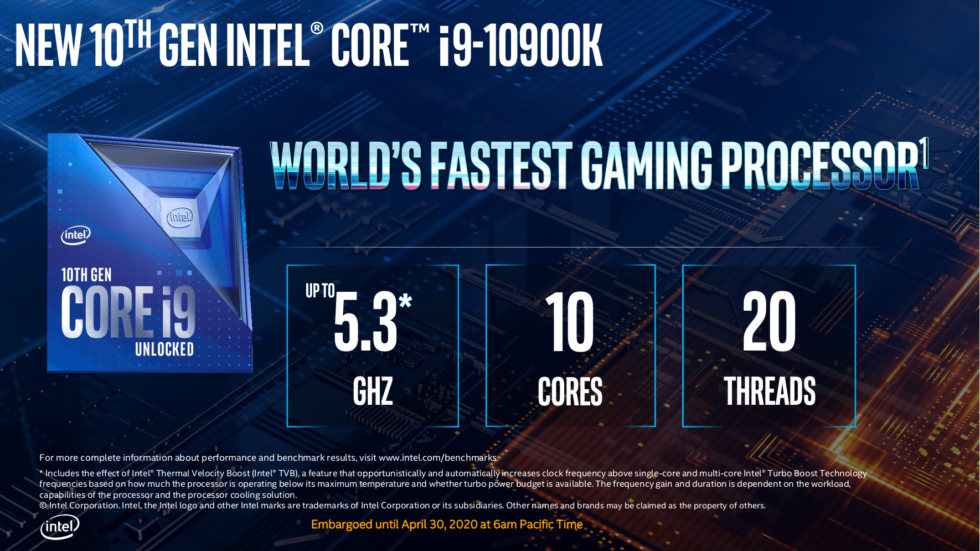
Enlarge / What if Comet Lake, but longer? This wafer litho image gives us a bird's eye view of the layout of one of the Comet Lake S-series CPUs, featuring two more cores than prior generations. (credit: Intel Corporation)
So far, 2020 is a tough year for Intel CPU fans—in both senses of the word. The newest generation of Chipzilla's desktop CPUs have arrived, and Intel is scrambling to find ways (mostly involving overclocking) to make them look good compared to AMD's 7nm Zen 2 parts.
The 10th generation Core, Pentium, and Celeron parts follow the trend established by Intel's recent laptop H-series launch: they're old process technology tweaked to within an inch of its life, and Intel still isn't delivering any hard performance numbers which could be compared directly to the competition's.
Performance
-

Intel is leaning heavily on raw clock rate with the new Comet Lake S-series, just as they did with the H-series laptop parts earlier this year. [credit: Intel Corporation ]
For the most part, Intel's pre-launch benchmark data looks like what they provided us for Comet Lake H-series laptop CPUs—razor-sharp focus on unqualified raw clockspeed, and a healthy smear of Vaseline on the lens when looking at real performance. Once again, we're seeing single-core turbo speeds on the highest SKUs in excess of 5GHz—and a noticeable veer away from hard performance data that might be directly compared to AMD's 7nm Ryzen CPUs.
No comments:
Post a Comment